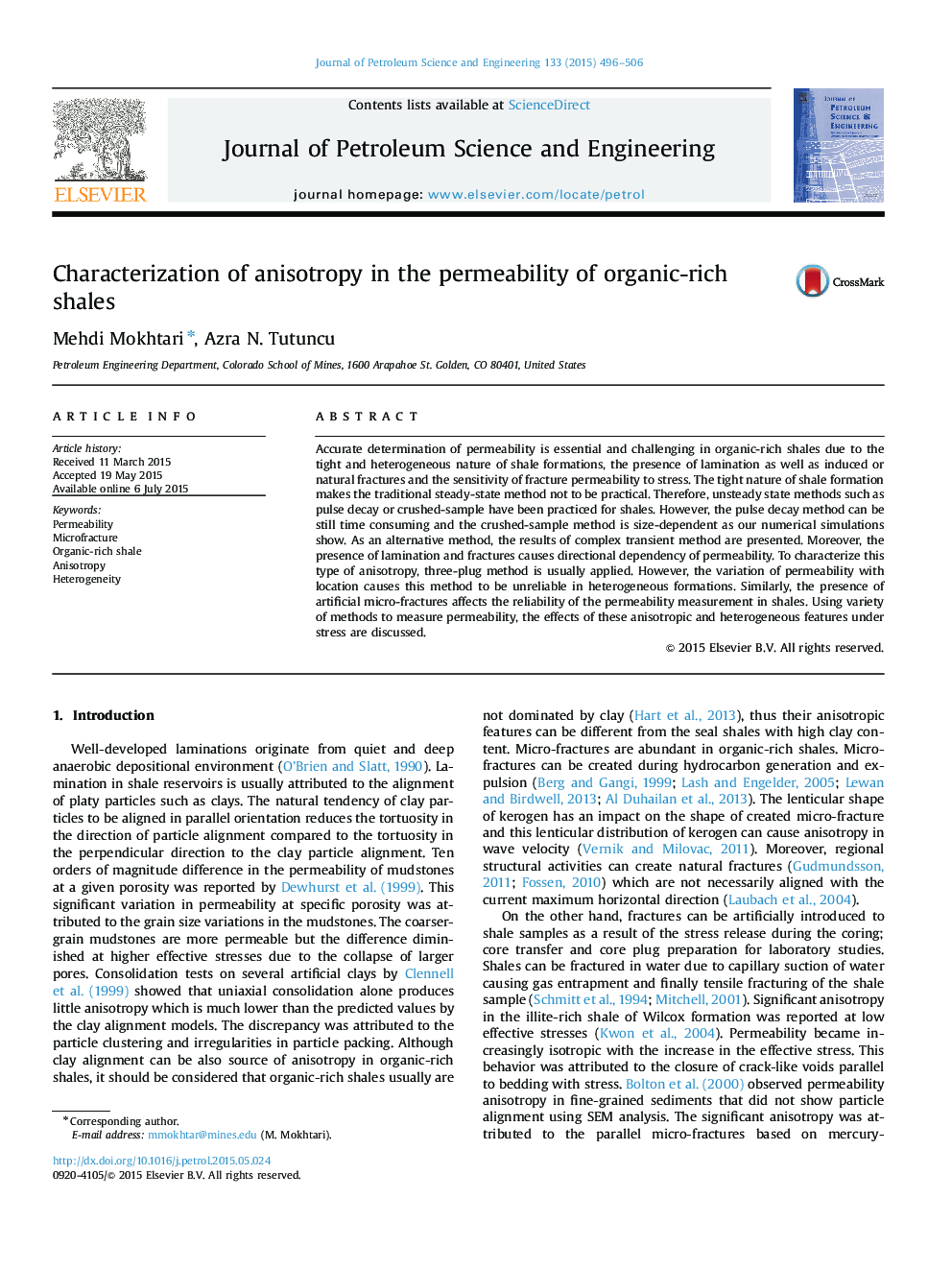| Article ID | Journal | Published Year | Pages | File Type |
|---|---|---|---|---|
| 1754742 | Journal of Petroleum Science and Engineering | 2015 | 11 Pages |
Abstract
Accurate determination of permeability is essential and challenging in organic-rich shales due to the tight and heterogeneous nature of shale formations, the presence of lamination as well as induced or natural fractures and the sensitivity of fracture permeability to stress. The tight nature of shale formation makes the traditional steady-state method not to be practical. Therefore, unsteady state methods such as pulse decay or crushed-sample have been practiced for shales. However, the pulse decay method can be still time consuming and the crushed-sample method is size-dependent as our numerical simulations show. As an alternative method, the results of complex transient method are presented. Moreover, the presence of lamination and fractures causes directional dependency of permeability. To characterize this type of anisotropy, three-plug method is usually applied. However, the variation of permeability with location causes this method to be unreliable in heterogeneous formations. Similarly, the presence of artificial micro-fractures affects the reliability of the permeability measurement in shales. Using variety of methods to measure permeability, the effects of these anisotropic and heterogeneous features under stress are discussed.
Related Topics
Physical Sciences and Engineering
Earth and Planetary Sciences
Economic Geology
Authors
Mehdi Mokhtari, Azra N. Tutuncu,
